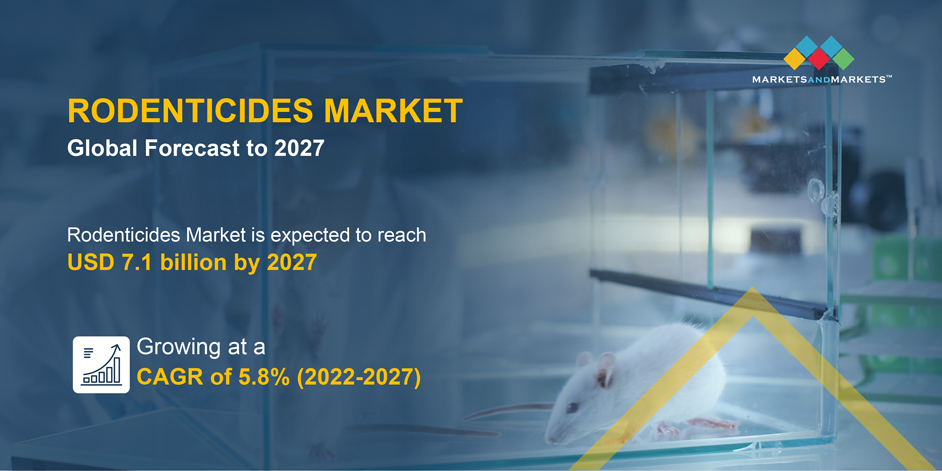The global rodenticides market is predicted to experience a 5.8% compound annual growth rate, leading to a revenue surpassing USD 7.1 billion by 2027. This thriving industry, valued at USD 5.4 billion in 2022, is on a path of substantial growth. The rising concern for environmental pollution and public health hazards posed by vector-borne diseases is fueling the global demand for rodent control services. The growing population, coupled with the overexploitation and degradation of limited resources, is contributing to the degradation of the ecosystem, leading to global warming and temperature rise. These factors, in turn, are indirectly strengthening pests’ ability to survive in different seasons, as evidenced by the migration of tropical pests away from the equatorial region due to global warming.

Rodenticides Market Growth Drivers: Displacement of rodents due to urbanization
Urbanization is one of the key factors encouraging land use, particularly in developing countries, where 90% of the people are expected to be residents of urban areas. Moreover, urbanization is expected to impact public health due to the shift of rural pathogens adapting to the urban environment and increasing their number.
According to an article by Rentokil, it has been observed that the construction of new buildings is increasingly displacing the rat population across regions. As per the report by Building and Construction Authority (BCA), the need for construction in the country is increasing. Some construction activities in rural areas disturb the nesting area of rodents, such as rats, and thus encourage them to relocate to another urbanized location.
According to a recent article posted in Frontiers, Norway, black rats are considered the urban rats that inhabit cities worldwide. They adapt to environmental changes caused by humans and thus survive easily. Hence, the increase in the levels of urbanization creates the need for rodent control, majorly in the urban areas of developing regions.
Rodenticides Market Trends
- Regulatory Changes: There has been a global trend towards stricter regulations on the use of certain rodenticides, especially those containing potent and persistent active ingredients. Regulatory bodies are increasingly focusing on reducing environmental impact and potential harm to non-target species.
- Rise in Eco-Friendly Solutions: The demand for environmentally friendly and non-toxic rodent control solutions has been on the rise. Consumers and businesses are seeking alternatives that have minimal impact on ecosystems and wildlife.
- Advancements in Formulations: Research and development efforts are leading to the creation of more effective and target-specific rodenticide formulations. Manufacturers are working on products that are safer for non-target animals and have lower toxicity levels.
- Integrated Pest Management (IPM): The adoption of integrated pest management practices is growing. This approach combines various pest control methods, including biological controls, habitat modification, and monitoring, alongside the judicious use of rodenticides.
- Technology Integration: The industry is witnessing advancements in technology, such as smart rodent control solutions. This includes the use of sensors and monitoring devices to detect and track rodent activity, providing more precise and efficient pest control.
- Public Health Concerns: Rodents are vectors for various diseases, and this has increased the importance of rodent control in public health strategies. The prevention of diseases transmitted by rodents is a key driver in the rodenticides market.
- Global Urbanization Trends: With increasing urbanization globally, there is a growing need for effective rodent control in urban areas. The expansion of human settlements provides conducive environments for rodent infestations.
Rodenticides Market Share
- BASF SE (Germany)
- Bayer AG (Germany)
- Syngenta AG (Switzerland)
- UPL Limited (India)
- Neogen Corporation (US)
- Anticimex (Sweden)
- Ecolab Inc. (US)
- Rentokil Initial PLC (UK)
- Senestech, Inc. (US)
- Rollins, Inc. (US)
- Liphatech, Inc. (US)
- JT Eaton & Co., Inc. (US)


